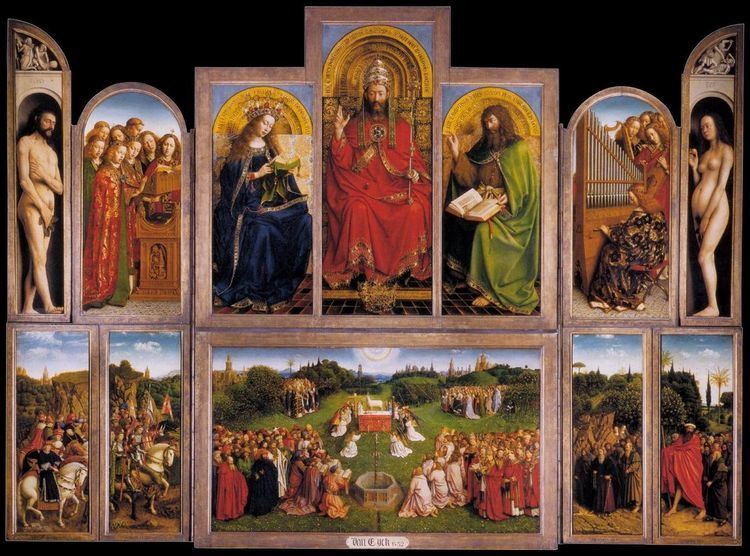 | ||
A polyptych (/ˈpɒlɪptɪk/ POL-ip-tik; Greek: poly- "many" and ptychē "fold") is a painting (usually panel painting) which is divided into sections, or panels. Specifically, a "diptych" is a two-part work of art; a "triptych" is a three-part work; a tetraptych or quadriptych has four parts; pentaptych five; hexaptych six; heptaptych (or septych in Latin) seven; and octaptych eight parts.
Polyptychs typically display one "central" or "main" panel that is usually the largest of the attachments, while the other panels are called "side" panels, or "wings". Sometimes, as evident in the Ghent and Isenheim works, the hinged panels can be varied in arrangement to show different "views" or "openings" in the piece.
Polyptychs were most commonly created by early Renaissance painters, the majority of which designed their works to be altarpieces in churches and cathedrals. The polyptych form of art was also quite popular among ukiyo-e printmakers of Edo period Japan.
Some medieval manuscripts are polyptychs, particularly Carolingian works, in which the columns on the page are framed with borders that resemble polyptych paintings. Altar displays may also form polyptychs.
Examples
Media related to polyptychs at Wikimedia Commons
